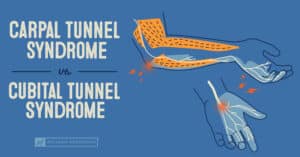There are very few requirements to meet if you want to start running. All you really need in the beginning is a good pair of running shoes and a place to run. Despite its low barrier to entry, running can also leave you with aches and pains if you’re not careful. In today’s blog we examine three common running mistakes that can lead to injury and share tips to help correct those mistakes for the future.
Good running technique can be hard to master, especially for those who are new to running. There are many technicalities to examine when trying to improve your running form. Your gait, the position of your shoulders and arms, how you breathe, and even how your weight is handled while you move can all affect your running abilities.
One way to assess your running form is by recording yourself running on a treadmill or a track. This recording can help you look for any running mistakes that need to be fixed.
1) Poor Upper Body Posture
Slouching under any circumstance puts stress on your neck, chest, and shoulder muscles, causing them to feel strained and weighed down. Unfortunately, the drawbacks can be even more harmful if you’re slouching while running. Not only can poor upper body form restrict your movement and breathing capacity, but it can also cause your muscles to waste precious energy and inhibit your progress.
Solution: Improve Upper Body Form
It will take time and patience to learn how run with good upper body posture, but once you get the hang of it, you’ll notice a huge difference in the way you breathe, move, and feel during your run.
Follow these running posture tips:
- Stand tall while you run, keeping your ears in line with your shoulders.
- Practice holding your gaze 10 to 15 feet in front of you.
- Keep your arms bended 90-degrees at the elbow.
- Relax your hand grip to promote proper circulation.
- Keep your breathing steady, inhaling through the nose and exhaling through the mouth.
Stretching can also help improve your posture and loosen up tight muscles. Try adding a few quick stretches to your warm up routine to get your shoulders loose and prepared to run.
2) Over-Striding
When you’re new to running, it can be easy to get caught up in the desire to run faster. Often, we make the mistake of increasing our stride by leaps and bounds to beat the clock.
Don’t get ahead of yourself: over-striding can not only decrease your performance in the long run, but it also increases the amount of shock absorbed by your body hitting the pavement.
Solution: Fix Your Stride
Be cautious with how your feet hit the ground: they should not be leaping forward too far or hitting the ground too hard. Aim to increase your cadence instead by taking shorter, faster strides that land around the mid-foot instead of landing on the toes or heel. This simple change of pace can boost your speed and running efficiency.
3) Ignoring Your Hips
In the human body, everything is connected. Your muscles, bones, and joints all work together to keep you moving. This connection is especially important when you’re running or playing sports.
When running, your hips and trunk are used to balance the weight of your body while your knees and legs propel you forward. If your hips are too weak, the weight of your body is then pushed onto your knees, causing excessive wear and tear as your body continues to move.
Because your knees weren’t made to withstand this extra pressure, the ligaments, tendons, and bone that make up the knee joint will begin to show signs of overuse. Over time, this can eventually develop into more serious injuries like tendinitis and stress fractures.
Solution: Improve Hip Strength & Mobility
If you notice your knees buckling or getting sore when you run, it may be time to add more hip strengthening exercises to your workout routine. Focus on strengthening your hips, glutes, and core to give your body more stability and reduce pressure on your joints.
Not only can strength training improve your body’s balance and speed, it can also reduce your risk of sustaining an injury. By including a combination of strength, mobility, and stability exercises, your body will be better prepared for the demands of a run.
Run Pain Free With Airrosti
If pain or injury is keeping you from enjoying your run, schedule an appointment with an Airrosti provider today. Our providers are experts at diagnosing the cause of pain and eliminating it at the source, resolving most injuries in as few as three visits (based on patient-reported outcomes.) We also provide the tools and resources you need to keep pain from coming back so you can safely return to pain-free activity.
We also offer remote telehealth appointments. With telehealth, our providers can deliver their expertise directly to you.
Give us a call at (800) 404-6050 to learn more.
Read our Medical Disclaimer here.










